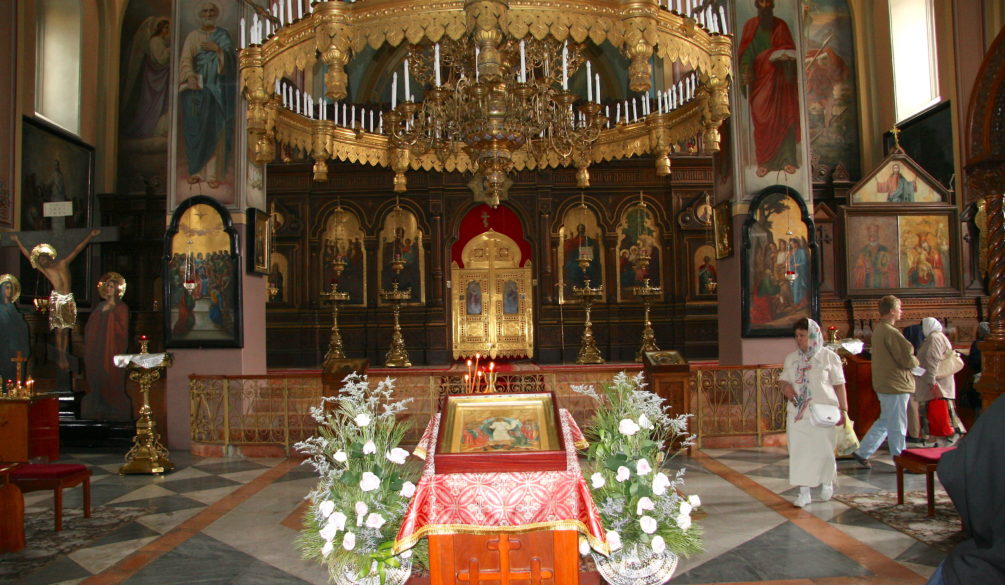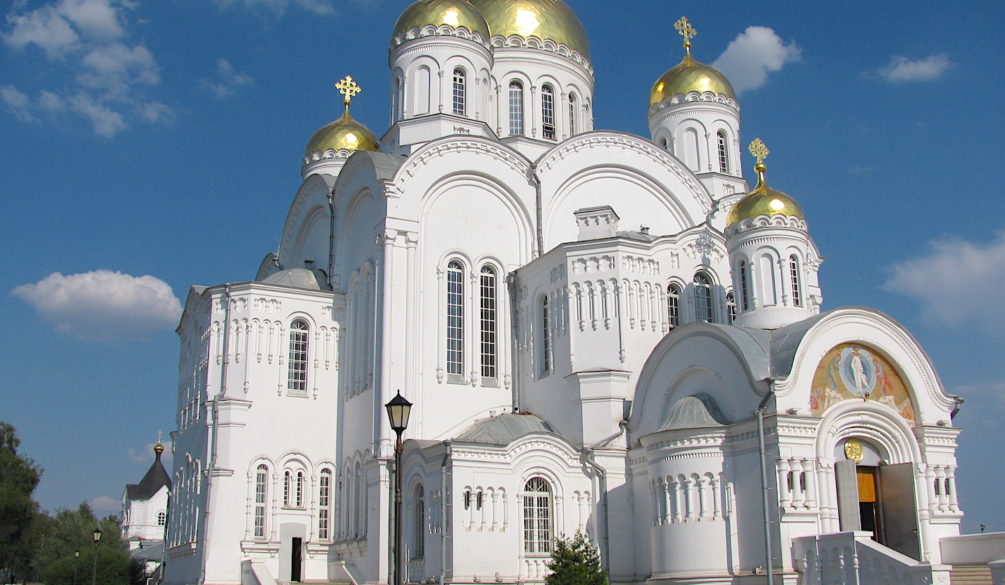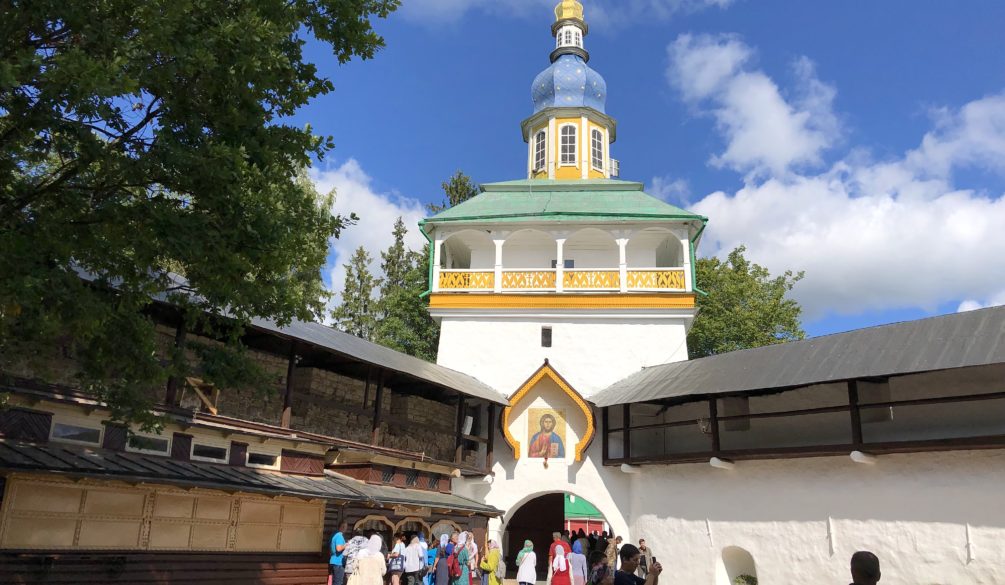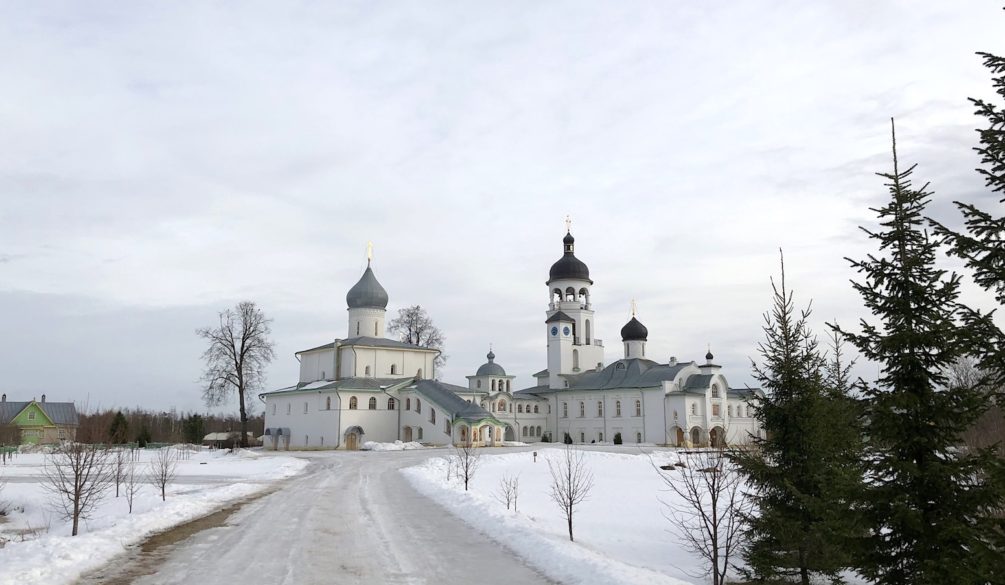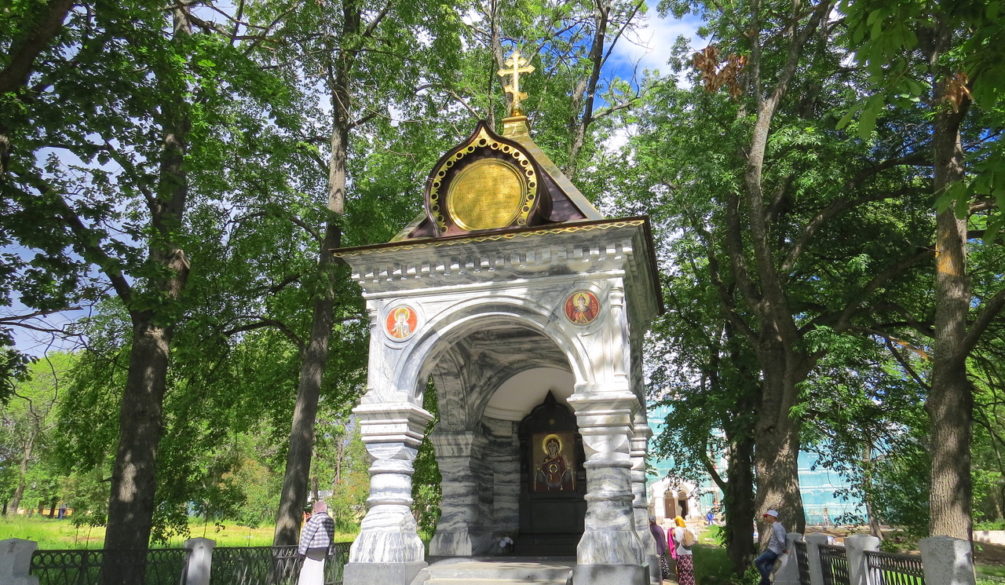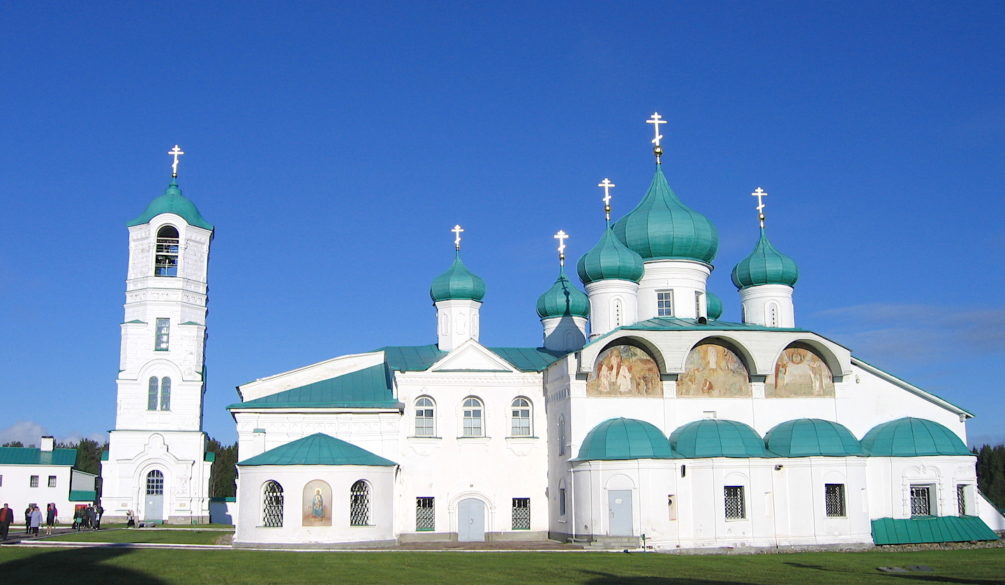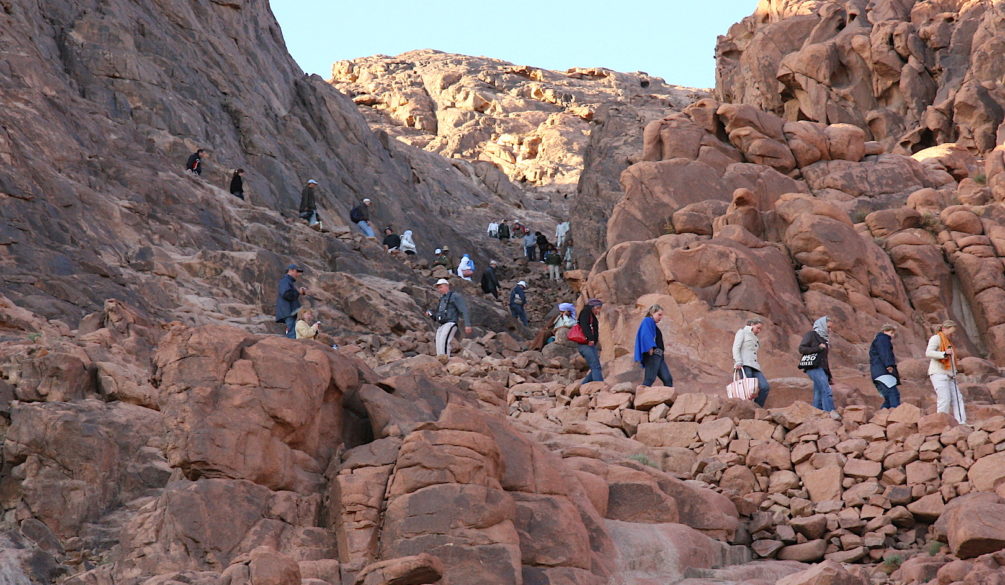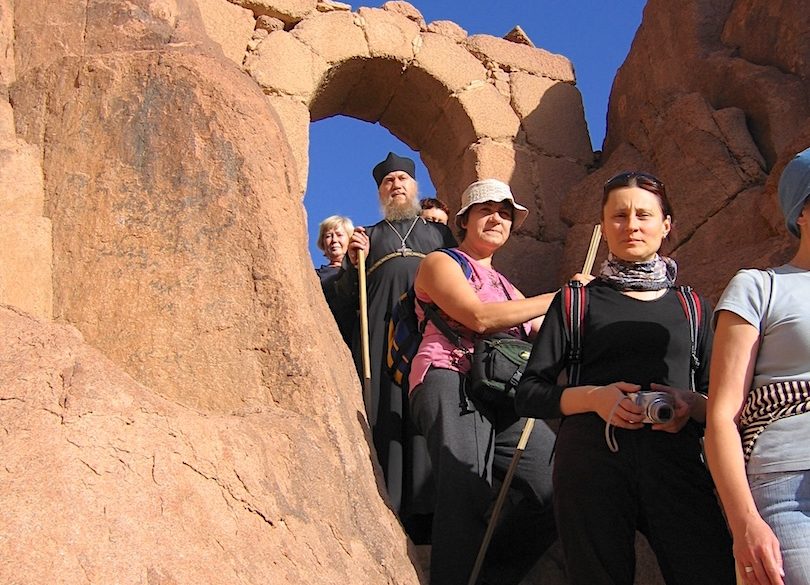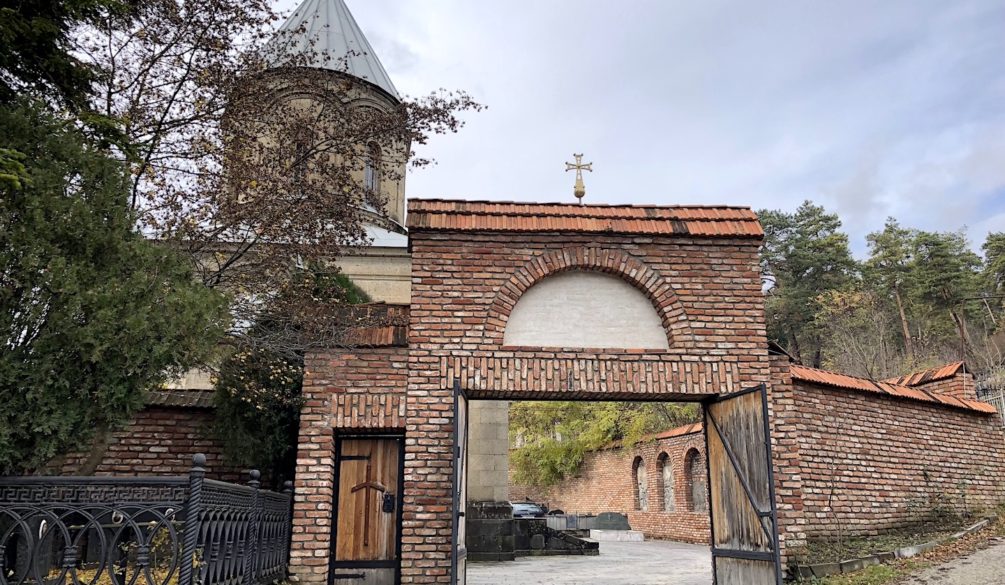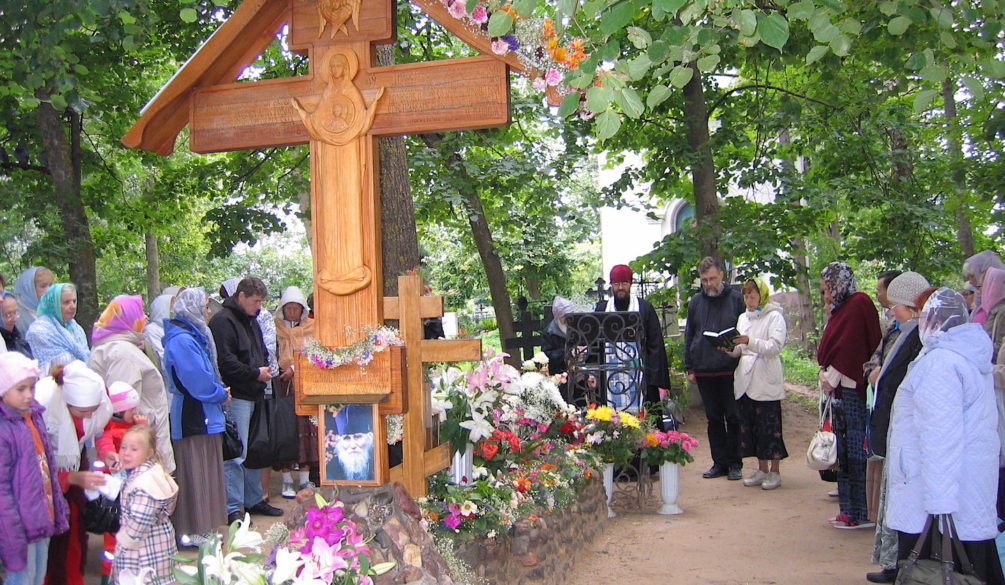2021
Holy Land 17-26.04.2007
There is in the East, under the blue vault of heaven, a small corner of the earth, destined from time immemorial by the Creator Himself to be the focus of the aspirations of all peoples and tribes who seek the true God and His providence on earth. As the heart is in man, so for thousands of years this promised land has poured out of itself, as from a spring of pure and inexhaustible, the power of spiritual life and unearthly truths that point man to the ideal to which he must tirelessly strive in order to achieve perfection. In the views of Christian peoples, this promised country has always seemed to be the pinnacle of the world, crowned with a Life-giving Cross, on which a terrible sacrifice was made about the human race, “wrote Fyodor Konstantinovich Grekov (Paleologist), an employee of the magazine” Russian Pilgrim ” at the end of the XIX century.
This country was called and is still called in different ways: The Promised Land, the Land of Canaan, Israel, Palestine, the Holy Land… This small corner of the earth is especially highlighted by God’s providence. Most of the events described in the Bible took place here. A righteous man once came to the Promised Land Abraham, laying the foundation for the God-chosen people and their faith in the One God. Here the prophet Moses led the people of God from the Egyptian captivity. Kings David and Solomon ruled here, and the prophets proclaimed the will of God to the people and spoke of the coming of the Savior into the world. Here passed the earthly life of our Lord Jesus Christ – from Nativity to Ascension.
In the Holy Land, to this day, everything preaches the gospel of Christ, and therefore it is sometimes called the fifth Gospel.
2021
Russia Seraphim-Diveyevsky Monastery 20-25. 07. 2010
Holy Trinity Seraphim-Diveyevsky Monastery
The monastery was founded in the second half of the XVIII century by St. Alexandra Diveyevskaya (Agafya Semyonovna Melgunova), who settled around 1760 in a village near Diveyev. By her zeal, in 1773-1780, a stone Kazan church was built in Diveyev, where the Kazan Women’s Community was established, which existed under the spiritual leadership of the elders of the nearby village. Sarov desert. December 9/22, 1826, with the blessing of the Rev. Seraphim of Sarov near the Kazan Mill community was arranged. In 1842, nine years after the repose of the Rev. Seraphim, they were united in the Seraphim-Diveyevo community.
In January 1861, the Seraphim-Diveyevsky Monastery was approved by the decree of the Holy Synod. Its first abbess was Abbess Maria (Elizaveta Alekseevna Ushakova, 1819-1904). During the years of the administration of Abbess Mary, the monastery acquired its unique architectural appearance: the Trinity Cathedral, the abbot’s building, the refectory church, the bell tower, as well as an orphanage, an almshouse, a hotel, about 30 buildings for obediences and housing of the sisters were built. At the beginning of the XX century, more than one and a half thousand nuns lived in the Seraphim-Diveyevsky Monastery. According to Bishop Nazariy (Kirillov) of Nizhny Novgorod and Arzamas, “this monastery is truly a miracle of God’s mercy through the prayers of its venerable founder.” On July 19 / August 1, 1903, Sarov hosted celebrations dedicated to the glorification of the saints of St. Peter the Great. Seraphim of Sarov. On July 20 / August 2, the Diveyevskaya Monastery hosted Emperor Nicholas II and Empress Alexandra Feodorovna and members of the royal family.
After the death of Abbess Maria in 1904, the monastery’s treasurer, nun Alexandra (Trakovskaya), was chosen in the abbess, who became the last abbess before the closure of the monastery. After the revolution in 1919, the monastery was registered as a labor artel and continued to operate. The sisters continued to observe the monastic charter and the way of monastic life. Only a few left the monastery. In September 1927, the monastery was closed, and in 1937, the Kazan Church was closed. During the Soviet era, many monastic buildings and shrines were destroyed.
The revival of church life in Diveyev began in 1988, when the authorities allowed to buy a house over the Kazan Spring and rebuild it for the church. On Lazarev Saturday, April 22, 1989, the wooden church of the Kazan Icon of God was consecrated Mothers. In the spring of 1990, the Trinity Cathedral was re-consecrated.
Monastic life in the Seraphim-Diveyevsky Monastery resumed on July 21, 1991 — the decision of the Holy Synod was made on the day of the celebration of the Kazan Icon of God Mothers. On July 30, 1991, the relics of the Holy Father were celebrated in the Diveyevo Monastery. Seraphim of Sarov, since then they rest in the Trinity Cathedral, according to the word of the saint, who predicted that he would be made flesh in Diveyev. November 17, 1991 Metropolitan Nikolai (Kutepov) of Nizhny Novgorod and Arzamas consecrated the nun Sergia (Konkova), who had previously served as a deanery in the Holy Transfiguration Monastery of the Monastery of the Transfiguration of the Saviour, to the rank of abbess of the Seraphim-Diveyevsky Monastery. In 2000, Schema-nun Alexandra (Melgunova), Schema-nun Marfa (Melyukova), and Nun Elena (Manturova) were glorified as local saints of the Nizhny Novgorod diocese. In 2004, the glorification of the Blessed Pelagia, Paraskeva and Mary in the face of the saints of Diveyevo took place.
On April 14, 2008, the Cathedral of the Diveevo Saints was established, the celebration of which takes place on June 27, the day after the memorial day of the original Diveevo monastery, St. Alexandra. The Cathedral of the Diveevo Saints includes 17 ascetics of piety — prelates, venerable, blessed, and New martyrs. The holy relics of eight of them are located in the churches of the Seraphim-Diveyevsky Monastery. The monastery has more than two dozen monasteries. Among them: Pokrovsky skete in the village of Kanerga, Kutuzovsky skete in the village of Kutuzovka, Nikolsky skete in the village of Avtodeyevo, Seraphim-Ponetaevsky skete, Holy Trinity Belbazhsky Monastery in Koverninsky district, skete in honor of the All-merciful Savior in the village of Nucha, Melyaevsky skete in the village of Melyaevo, Znamensky in the village of Khripunovo, etc. Holy Relics of St. Seraphim of Sarov; miraculous Icon of the Mother of God Mother’s “Tenderness”; the groove of the Queen of Heaven; the things of St. Seraphim of Sarov; the relics of the Venerable wives of Diveevo Alexandra, Martha and Elena; the relics of the blessed wives of Diveevo Pelagia, Paraskeva and Mary; the relics of the Venerable Confessor Matrona (Vlasova).
Holy springs – Kazan (the oldest); Healer Panteleimon; Alexandra Diveevskaya; Iversky; Pr. Seraphim of Sarov (the most revered, located near the village. Tsyganovka)
2021
Russia Holy Dormition Pskov-Pechersk Monastery August 24, 2019
The monastery in the twentieth century and today
In the twentieth century, the monastery together with the Fatherland had to go through two wars. But the ancient traditions, carefully preserved in the monastery, were not violated even in the most terrible times for Russian monasticism. By the prayers of the Most Pure Mother of God, the Pskov-Pechersk Monastery was assigned to bourgeois Estonia by the providence of God under the 1922 treaty and remained there until 1940, which saved it from general ruin and desecration.
The disasters that befell our Fatherland during the Great Patriotic War did not pass by the monastery. The Refectory and the Fraternal Building, the wall of the St. Michael’s Cathedral were destroyed. Other churches were also hit by artillery fire.
Archimandrite Pimen, the vicar of the monastery from 1949 to 1954, who later became the Patriarch of Moscow and All Russia, was largely responsible for putting the monastery’s economy in order in the post-war years. His work was continued by Archimandrite Alipius, a warrior and artist (1959-1975). In 1960, he began the restoration of the fortress walls and towers (they had been standing uncovered since 1688 after a devastating fire, gradually collapsing).
During the difficult time of the war, the monastery was headed by Abbot Paul (Gorshkov). After the release of Pechora, he was arrested, sentenced to 15 years and died in a prison hospital at the age of 80. For many years, tourists who visited the monastery were told about its alleged cooperation with the Nazis. Only after 52 years, Abbot Paul was rehabilitated. Then, in the first year of the war, the brethren did not accidentally choose him as their governor. Thanks to the subtle and clever line of behavior he chose with the occupation regime, the monastery with all its values and shrines was preserved, the brethren were preserved. Moreover, trusting in the mercy of God, he strengthened others with his faith, organized food aid to prisoners of the Red Army in the camp point No. 134 of Pskov, the sick and elderly of the Pskov Home for the Disabled and the poorhouse on Zavelichye. There is also evidence that during the war, Soviet scouts took refuge in the monastery caves. One of them, when visiting the monastery in 1984, personally confirmed this fact.
So the holy monastery-fortress and in the last war remained an unquenchable lamp of the Orthodox faith, a reliable support for our compatriots to survive in this difficult time for the whole country.
The monastery was also famous in peaceful years for the spiritual exploits of its inhabitants, whose prayers do not impoverish the mercy of God to those who seek Heavenly consolation at the Pechersk shrines. Throughout the entire existence of the monastery, the fire of senile service has not been extinguished in it. All those who came for spiritual comfort and advice found them in conversations with the great prayer books.
During a visit to the Pechersk Monastery by the family of Tsar Nicholas II, the latter had a spiritual conversation with the elder Theodosius, who was then working in the monastery.
For more than 60 years, Hieroschemimonk Simeon (Zhelnin) served God and people, spiritually nurturing not only the monastery’s brethren, but also numerous laypeople and pilgrims who came to him for spiritual advice. A separate book has been published about his life, in which the reader will find many testimonies about the miraculous prayerful help of the elder. On April 1, 2003, Hieroschemimonk Simeon was glorified in the face of saints.
Schiarchimandrites Agapiy (Agapov), Pimen (Gavrilenko) continued the feat of senile service in the 60s and 70s.
After the Great Patriotic War, the Pskov-Pechersk Monastery was visited by the elders from Valaam, who had been transported from the holy island to Finland before the war. Hieroschemonachs Michael (Pitkevich), Luke (3emskov) and other elders were like a spiritual bridge connecting the Old Valaam and the holy Pechersk monastery. Metropolitan Veniamin (Fedchenkov) spent the last years of his life in the monastery.
The monastery continues to be decorated all these years. In the 80s, with the blessing of Metropolitan John (Razumov), the vicar Archimandrite Gabriel (Steblyuchenko 1975-1988), now Archbishop of Blagoveshchensk and Tynda, carried out major restoration work: the painting of the temple walls was updated, the restoration of the monastery walls, which was started under Archimandrite Alipia, was completed, a new fraternal building was built, a chapel in honor of the Monk-Martyr Cornelius was built in the St. Nicholas Church, the premises were renovated bakeries and libraries.
Thanks to the zeal of the next abbot (1988-1992), Archimandrite Pavel (Ponomarev), now Metropolitan of Ryazan and Mikhailovsky, the monastery’s library, which was kept in Tartu, was returned to the monastery, new buildings of the hospital, icon-restoration and sewing workshops were built, a Mercy House for lonely elderly people was built in the city, 100 hectares of arable land were returned to the monastery.
The viceroy, Archimandrite Roman (Zherebtsov), continued the reconstruction of the monastery buildings and churches, and under his care built a wooden fraternal building and began covering the fortress walls and towers with copper.
The vicar of the monastery from 1995 to 2018, Archimandrite Tikhon (Secretarev) He continued the pious tradition of his predecessors in preserving the monastic charter and improving and decorating the monastery. The construction of the fraternal stone building near the tower of the Lower Lattices with a bath and laundry has been completed, the work on covering the fortress walls with copper has been completed, the construction of the economic complex is underway, the domes of the temples, the paintings on the facade of the Assumption Church have been restored, and the restoration of the Mikhailovsky Church has been carried out.
Its centuries-old traditions are carefully preserved in the monastery. With the blessing of His Holiness, His Holiness Patriarch Alexy II of Moscow and All Russia, the locally venerable Fathers Mark, Jonah, and the Venerable Mother Vassa were added to the All-Russian Holy Places. Since 1994, the monastery has been celebrating the memory of the Holy Fathers of Pskov-Pechersk in the 4th week after Pentecost, and in 1998, the celebration in honor of the miraculous icon of the Mother of God “Emotion”, performed in the 7th week after Easter, was restored. For the first time in many years (since the beginning of the twentieth century) in July 2000, the miraculous icon of the Mother of God ” Tenderness” Pskov-Pecherskaya visited Pskov at the consecration of the chapel in honor of St. Olga.
The monastery continues its catechetical and publishing activities.
On the shore of Lake Pskov, the monastery opened a Priozerny Skete. Also in the monastery there is a skete on the shore of Lake Malsky.
On June 1, 2012, a Pilgrimage center was opened on the territory of the former military unit, which can accommodate a large number of people who want to pray in the monastery and worship its shrines. A guided tour service is also available.
All the spiritual and educational activities of the monastery are led by His Eminence Tikhon, Metropolitan of Pskov and Porkhov, Holy Archimandrite of the Holy Dormition Pskov-Pechersk Monastery with the Spiritual Cathedral, blessing and sanctifying the works of the monks.
And may God grant that, through the intercession of the Most Pure Theotokos, the tradition of the Pechersk asceticism may not be suppressed, and that the monastery may continue to be the bright embodiment of the ideal of Orthodox Holy Russia.
2021
Russia Krypetsky Monastery February 27, 2019
Krypetsky St. John the Theologian Monastery, located in the middle of the woods, is one of the most beautiful active monasteries in Pskov.
The monastery was founded in 1485 by the Monk Savva Krypetsky in the middle of the Pskov swampy swamps, in an impassable place where only bears and other wild animals lived, near a lake rich in fish. Having built a hut on a stone, Sava lived in fasting and prayer for many years. Soon his disciples began to flock to his residence, attracted by the rumor of his holy life.
In 1487, a monastery was officially founded at the Pskov Veche. Prince Yaroslav Vasilyevich Striga-Obolensky of Pskov took an active part in the construction of the monastery. It is known that with his participation, a bridge was built on the road to the Holy Gate of the monastery.
Not wanting to be in charge himself, the blessed elder put an abbot named Cassiana at the head of his monastery. In the cell of Sava himself there was nothing but the icon of the Savior and the Mother of God His mother, the old matting on which he used to lie down for a short rest. The Monk died Sava was born on August 28, 1495, and was buried in the wooden church of St. Nicholas built by him. St. John the Theologian. The present stone cathedral was built in 1557.
In 1581, the monastery was attacked by the Polish troops of Stefan Batory. Russian Russian peasant, who had deceived the Poles by assuring them that there was no one in the monastery, failed in the siege: the Poles were routed by a Russian detachment hiding in the walls of the monastery.
In the XVI century, in the Krypetsk monastery, the Monks Nil Stolobensky and Nikander the Hermit began their exploits and took monastic vows in it. In 1672
here he also accepts monastic life with the name Anthony Athanasius Lavrentyevich Ordyn-Nashchokin, head of the Embassy Order under Tsar Alexei Mikhailovich.
In the second half of the XIX century, the blessed monk Cornelius lived and asceticized in the Krypetsk monastery. In July 1997, the remains of the blessed monk Cornelius were found, and until January 2000, they were in the monastery church. In September 1999, the monk Cornelius was glorified as a locally venerated saint Pskov Diocese.
By the beginning of the XX century, the Krypetsky Monastery was one of the richest in Russia. It consisted of 40 monks, 21 novices, and the monastery land included 3,602 tithes of land.
Now on the territory of the Krypetsky monastery, restoration work has been carried out, some dilapidated buildings have been dismantled, and new ones are being built. The monastery takes on a beautiful, majestic appearance. The monastery is
now home to about 70 monks and novices. Pilgrims come to venerate the relics of the Venerable Sava and Cornelius Krypetsky, as well as to drink healing water from the holy spring.
About the miraculous water of the Holy Lake in the Krypetsk monastery: The lake, called the Holy One, also has the ancient name Kopanets, showing its man-made character. The water in the Holy Lake of the monastery has been famous for its wonderful properties for centuries. More Reverend Cornelius Krypetsky healed the suffering with water from the Holy Lake. Now on the Holy Lake in the monastery there is a chapel of St. Sava Krypetsky with a baptismal font and a bath for dipping. The water in the lake is warm and soft, but after dipping, the cleansing power of the Holy Lake water is felt.
2021
Russia Valaam Spaso-Preobrazhensky Monastery June 22-25, 2019
There are monasteries in the Russian land whose wondrous light attracts pilgrims from all over the world: the Trinity-Sergius Lavra, Optina of the Deserts, Diveevo… In this series, Balaam occupies a special place. Surrounded on all sides by water, remote from the worldly bustle, it seems to be created for a quiet, contemplative monastic life.
Located in the northern part of Lake Ladoga, 22 km from the mainland, the Valaam archipelago has about 50 islands with a total area of 36 square kilometers, the largest of them is the island of Valaam (27.8 square kilometers), next to it are located about. Skytsky, Predtechensky Island, Yemelyanovsky Island and many other small islands. The distance to the nearest Karelian city of Sortavala (old name Serdobol) is 42 km, to Priozersk-about 60 km, to St. Petersburg-more than 220 km.
The coastline of Valaam is cut by numerous straits, channels and bays, which gives it a special attraction, distinguishing it from many other Ladoga islands. The water area of the archipelago, due to the structure of the lake’s currents, is least affected by the waters of the tributaries and can be considered as a reference for the central part of Ladoga.
The Valaam archipelago has a rare and amazing beauty of nature. On a relatively small territory, there are about 480 species of plants inherent in various natural areas, more than 200 species of birds are found, moose, hares, squirrels, and foxes live. On the deserted islands of the archipelago, you can see the rookeries of the Ladoga seal listed in the Red Book, here you can catch salmon, palia, whitefish, grayling and other valuable fish species.
The sheer cliffs that take on the mighty Ladoga waves, and the quiet peace of the inland lakes, the age-old firs and pines that resist the cold winds, and the discreet beauty of the bright alleys and gardens, the harsh grandeur of the pristine northern nature and the originality of the architectural ensembles — all this gives Valaam a unique appearance of one of the most beautiful islands in the world.
But the earthly beauty of these places is also a visible reflection of the beauty of the unearthly, spiritual. For all Orthodox people Valaam is unthinkable without its ancient monastic monastery, which for centuries was the spiritual center of Orthodox Russia and was rightfully called Northern Athos.
Modern historians date the first mention of the island of Valaam to 800 BC. At that time, there was a huge idolatrous temple on the island, where human sacrifices were offered to the gods Veles and Perun. This is how the ancient one could find it Balaam the Apostle Andrew The First-Called. Monastic tradition says that the holy Apostle Andrew The first-Called, the enlightener of the Scythians and the ancestors of the Slavs, arrived from Kiev to Novgorod, along the Volkhov River reached Lake Ladoga, and then-Valaam, where he blessed the mountains on the islands with a cross or an apostolic rod. This tradition is recorded on the first pages of the “Tale of Bygone Years” or the Chronicle of St. Nestor (the beginning of the XII century).
Tradition tells us that it was the pagan priests who first listened to the apostle’s sermon and received baptism, and then destroyed the temples with their own hands. On the site of the destroyed idols, the disciples of the Apostle Andrew installed a stone cross, and after centuries, the brothers of the Valaam monastery entered their “way of the cross”.
2021
Russia Holy Trinity Alexander Svirsky Monastery June 5-9, 2009
The Holy Trinity Alexander Svirsky Monastery is 260 km from Saint Petersburg and 21 km from the district center of Lodeynoye Pole. The monastery founded by St. Alexander Svirsky at the end of the XV century
in the remote Olonets region, in the virgin dense forests, among the pagan indigenous population of the Korel, Veps, and Chudis, he quickly became famous. The strengthening of the Orthodox faith in this region was made possible thanks to the strict, pious ascetic lifestyle of the founder of the monastery. People began to flock here, both monks and those seeking prayerful help. Even during the life of the Monk Alexander Svirsky, the monastery was formed as a union of two settlements: at the fraternal cells — the Trinity complex, at the monastery cemetery-the Transfiguration. Both complexes today represent a single monument of architectural structures of the XVI-XIX centuries.
At the turn of the XVIII-XIX centuries, the monastery was called the “Northern Lavra”. The monastery is located in a picturesque location
on the high shore of Lake Roshchinsky, 6 km away. from the Svir River. Most of the buildings are well preserved, demonstrating the high art of the architects who built them, but all of them are in need of major restoration work today.
The oldest building of the monastery is the stone Church of the Intercession of God Mother, built by St. Alexander himself in 1533. Its construction was carried out
on the donations of Tsar Basil III. The church with a refectory and a belfry is made in the Novgorod style. Stone The Transfiguration Cathedral with the chapel of St. Alexander Svirsky (1644). Stone Cathedral of the Life-giving Church The Church of the Holy Trinity was built in 1791, but before that there was a wooden church built by the founder of the monastery, and the Church of St. Pror was consecrated in 1509. Zechariah and Elizabeth built in 1685 The Church of John of Damascus built in 1718 The Stone chapel of the Saint The Trinity Church is built on the place where, according to legend, the Most Holy Trinity appeared to the Monk Alexander of Svir.
Tsars, grand dukes, Russian emperors, noble boyars and nobles, and merchants made great contributions to the construction of churches and monastic buildings. Information about each of them was entered by the careful hand of the monks in the “Census Books”. Most of the monastery’s archive has been preserved and is housed in the National Public Library, the Library of the Russian Academy of Sciences, and the three historical archives of St. Petersburg.
During the 500-year period of the monastery’s existence, the life of the monastery outwardly did not differ much from the life of other monasteries in Russia: the heyday and fall, the invasion of enemies, fires, looting, the restoration of churches again and strict monastic life, constant prayers and work. In the best of times, the monastery had 8 churches, a rich sacristy, expensively decorated icons, a rich book depository with ancient manuscripts, scrolls and books.
Historians of the XIX century called the monastery the Northern Lavra, it was subordinated to 27 monasteries and the desert of this region. There were years when the monastery after the destruction remained only the main shrine-the relics of St. Alexander Svirsky, and a few monks (the beginning and end of the XIX century).
There was also a very dashing time (1918), when there was no shrine or monks in the monastery. The relics were taken away, the monks dispersed, some of them were shot, including the abbot-Archimandrite Eugene / Trofimov/. Instead, on the territory of the monastery: prisons, barracks, invalid homes, a state farm, a psychiatric hospital, boarded-up temples and black eye sockets of the windows of the former fraternal cells.
The new inhabitants, who settled in the monastery in 1997, had to work hard — they got the monastery ruined. The biggest event in the life of the restored monastery was the discovery of the relics of the founder of the monastery — St. Alexander Svirsky, which took place on July 30, 1998.
With His prayers and help, the ancient monastery is being revived. The churches, part of the buildings and the territory of the Transfiguration and Trinity complexes were put in order, and the liturgical life of the monastery was established.
2021
Egypt-Sinai April 2007
Mount Sinai or Mount Moses
Mount Moses, also called Horeb and Sinai – is a mountain located on the Sinai Peninsula. It became famous due to the fact that it was here that after a forty-day fast, Moses received the commandments from the hands of the Most High, which were inscribed on two stone tablets. Information about the exact place where this event occurred is lost. Therefore, since the IV century AD, Christians and Muslims have revered the Sinai Mount Horeb as the Mount of Moses. Mount Sinai in Egypt has become a place of pilgrimage for many Christians from all over the world. As early as the second century AD. hermit Christians began to search for famous places mentioned in the Bible. They began to settle in the Sinai Peninsula, and already in 330 found a mountain under which grew a large thorn bush. The Empress Elena made a donation, which went to the construction of a chapel and a tower at the foot of Mount Sinai. In 547, by order of Justinian the Great, a monastery was built on the site of this chapel, which was named after the saint. Catherine. Excursions to this mountain are quite an interesting and informative journey. But it is worth remembering some rules for a more comfortable pastime. Do not doubt your abilities. Regardless of age, the climb, which lasts 2-3 hours, will not seem so difficult. It is only necessary to correctly calculate your strength, as well as get comfortable shoes and clothes. You should also take things warmer than they should be at this time of year. For example, in the summer, it is not superfluous to grab a thick windbreaker and a warm sweater. It is always much colder at the top than at the bottom, and the wind blows. The ascent to the top is divided into sections, between which there are parking lots for recreation. Do not immediately take a fast pace, you need to properly distribute the forces. If you feel tired, then rest normally. Nothing terrible will happen if you fall behind the group, as groups of pilgrims constantly climb to the top. You can get there with other people, and the “native” group will already be waiting on the spot. It is necessary to drink more regular water and breathe evenly. Also, moral support, especially for children and the elderly, will not be superfluous. At a normal pace and compliance with the rules, the ascent will only be a pleasure. But it is worth saving your strength for the last section, which is the steepest.
The dawn on Mount Sinai is something incredible. It turns the mountains golden, and the valley far below begins to come to life, shrouded in darkness until then, it suddenly lights up with extraordinary colors. According to legend, a pilgrimage to the mountain and the meeting of the dawn here removes all the sins of life from a person.
2021
Egypt – Sinai 3-13 October 2008
Mount Sinai or, as it is called by the Egyptians, Mount Moses is located in the north of Egypt and is one of the Christian shrines. Here, according to the Biblical tradition, the Lord gave Moses the Tablets of the Covenant (stone tablets with the ten commandments inscribed on them). Here, for the first time, God appeared to Moses in the form of a Burning Bush (a burning and non-burning bush of thorns) and called on him to lead the people of Israel out of Egypt to the Promised Land.
Mount Sinai is a place of a kind of pilgrimage feat: there is a belief that a person who overcame 3,750 steps cut by Christian monks in the rocks, climbed Mount Sinai and met the dawn on its top, is absolved of all sins.
Mount Sinai is the center of Christian shrines. The main one is the current monastery of St. Nicholas.Catherine (Greek), where the selfless monastic life has not stopped since the VI century. The monastery houses one of the world’s most valuable collections of ancient manuscripts and icons. On the site of the appearance of the Burning Bush stands a small church, in the courtyard of which the ever-living incarnation of Revelation is green-a thorn tree that can put out new branches from the old root. Basilica of the Transfiguration under the roof with cypress rafters, storing the relics of St. Nicholas. Catherine, the Church of the Assumption of the Virgin, in the crypt of which monks are still buried in accordance with the ancient Greek tradition, the monasteries behind a high fence, closed to the public, the Church of the Trinity – this is not a complete list of “witnesses” of the events of the early Christian era on the sacred Mount Sinai. Visiting these unique historical monuments, you will make many amazing discoveries for yourself.
2021
Georgia-Monastery of the Nativity of the Most Holy Our Lady of Easter 2019
Pilgrimage tours to Georgia are primarily an opportunity to relax your soul, touch the great Orthodox shrines and be spiritually reborn. Of course, this is also an opportunity to see many interesting places and visit fascinating excursions. The desire of pilgrims to visit Georgia and pray in places where believers have been praying for several centuries in a row is not accidental. After all, Georgia was one of the first to adopt Christianity and is deservedly considered one of the world’s main treasures of the Orthodox faith. Georgia adopted Christianity from the very Apostle Andrew the First-Called, who brought the faith to the territory of Iberia (modern Georgia) already at the beginning of the first century.
According to Orthodox traditions, the Mother of God chose Georgia as one of her four destinies. In Georgia, the image of the Virgin Mary, brought by the Apostle Andrew, is kept-one of the main shrines of the Orthodox faith. On the territory of modern Georgia, such great companions of the faith preached: Simon the Canaanite, the Apostles Matthew and Bartholomew.
In the Svetitskhoveli temple in Mtskheta, the chiton of Jesus Christ is kept – a great miracle-working treasure of Christianity.
Christianity has had a great influence not only on the culture and customs of Georgia, but also on its architecture. They say that architecture is the soul of the country, depicted in stone. And when you see Georgia, you realize that this is really true. The churches, temples and monasteries of Georgia are striking in their simplicity, and at the same time grandeur. Some of the most beautiful temples of Georgia that you can see during the pilgrimage: Bolnisi Basilica, Ninotsminde Cathedral, Jarvi Temple, Tsromi Church, Svetitskhoveli Temple and others.
2021
August 2010 Shrines of the Pskov land
Never forget, even in the darkest days of your life, to thank God for everything. He is waiting for it and will send you new blessings and gifts. A person with a grateful heart never needs anything. Instruction from the elder Archpriest Nikolai Guryanov.
Pilgrimage to these holy places changes for the better the life of each person who once stepped on this holy ground. Having been here, he carries invisible particles of grace in his heart, which will surely bring wondrous fruit.
The house of the Holy Trinity – Trinity Cathedral is a symbol of the Pskov land. The modern building of the cathedral is the fourth. The place for the temple was chosen by Princess Olga herself. Standing on the bank of the river Velika, she had a vision of three rays above the cape, at the confluence of the rivers Velika and Pskova. At Olga’s command the first wooden Trinity cathedral was laid. The now existing Trinity cathedral was built during 17 years and was finished in 1699. It is significantly different from the previous ones, first of all, because of its height, which exceeds 70 meters. The Cathedral is crowned with five heads that symbolize Christ and the four Evangelists. The cathedral amazes with its rich decoration. There is a unique seven-tier iconostasis of gilded wood.
The miracle-working icon of Our Lady of Chirsk is especially revered by the citizens of Pskov. It was brought to the cathedral in 1420 by a religious procession to commemorate the deliverance of Pskov inhabitants from pestilence.
The relics of saint saints are kept in the church: of saint princes Vsevolod-Gavriel and Dovmont-Timothei, of Pskov, holy martyr Joasaph, hegumen of the Snetogorsk monastery, and St. Blessed Nicholas the Fool for Christ, wonderworker of Pskov.







